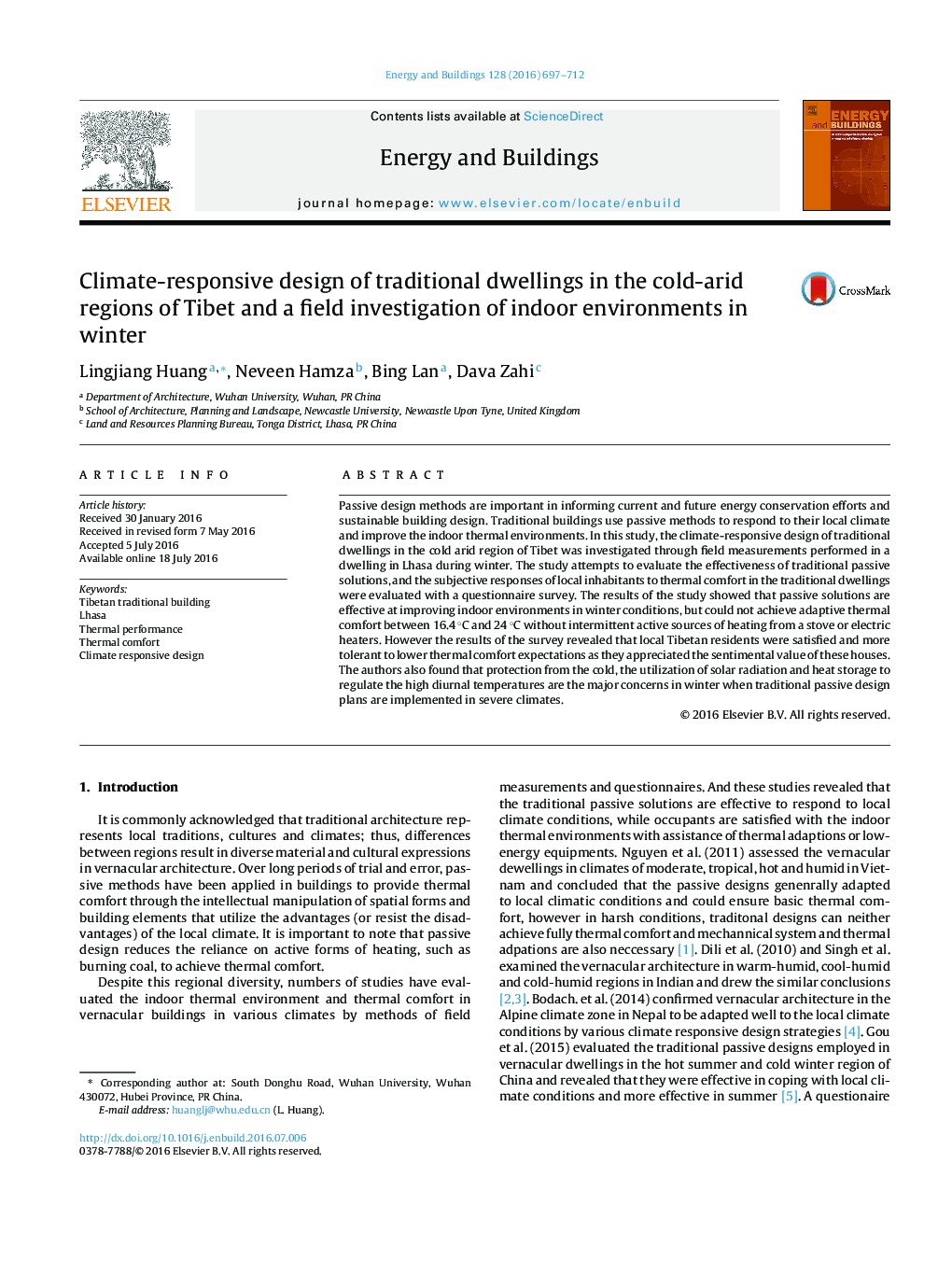| Article ID | Journal | Published Year | Pages | File Type |
|---|---|---|---|---|
| 6729895 | Energy and Buildings | 2016 | 16 Pages |
Abstract
Passive design methods are important in informing current and future energy conservation efforts and sustainable building design. Traditional buildings use passive methods to respond to their local climate and improve the indoor thermal environments. In this study, the climate-responsive design of traditional dwellings in the cold arid region of Tibet was investigated through field measurements performed in a dwelling in Lhasa during winter. The study attempts to evaluate the effectiveness of traditional passive solutions, and the subjective responses of local inhabitants to thermal comfort in the traditional dwellings were evaluated with a questionnaire survey. The results of the study showed that passive solutions are effective at improving indoor environments in winter conditions, but could not achieve adaptive thermal comfort between 16.4 °C and 24 °C without intermittent active sources of heating from a stove or electric heaters. However the results of the survey revealed that local Tibetan residents were satisfied and more tolerant to lower thermal comfort expectations as they appreciated the sentimental value of these houses. The authors also found that protection from the cold, the utilization of solar radiation and heat storage to regulate the high diurnal temperatures are the major concerns in winter when traditional passive design plans are implemented in severe climates.
Related Topics
Physical Sciences and Engineering
Energy
Renewable Energy, Sustainability and the Environment
Authors
Lingjiang Huang, Neveen Hamza, Bing Lan, Dava Zahi,
